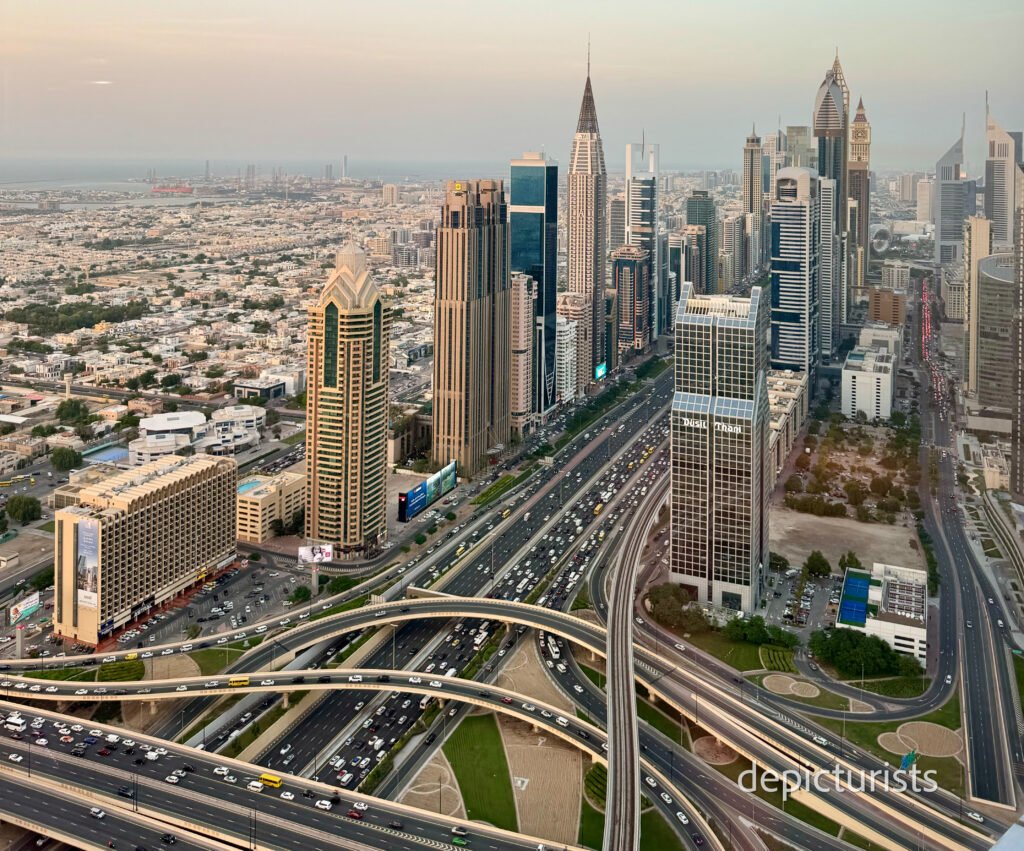Journey Through the UAE: Unveiling Tradition and Modernity

Nestled on the southeastern corner of the Arabian Peninsula, the United Arab Emirates (UAE) effortlessly blends ancient heritage with cutting-edge modernity. Formed on December 2, 1971, this youthful nation rapidly ascended to global prominence. It captivates the world with glittering skyscrapers, an opulent lifestyle, and cultural richness. Embark on a captivating journey through the UAE’s history, unraveling the threads of its remarkable tapestry.
Founding Father: Sheikh Zayed bin Sultan Al Nahyan
The story of the United Arab Emirates is inseparable from the vision and leadership of its founding father, Sheikh Zayed bin Sultan Al Nahyan. Born in 1918. Sheikh Zayed was the ruler of the Emirate of Abu Dhabi from 1966 until his passing in 2004. His commitment to unity, prosperity, and the welfare of his people played a pivotal role in the formation and development of the UAE.
During the early 20th century, the region that now constitutes the UAE was a collection of emirates, each with its own ruler and identity. Sheikh Zayed recognized the potential for strength in unity and tirelessly worked towards bringing the emirates together. His efforts culminated in the signing of the Declaration of the Establishment of the United Arab Emirates on December 2, 1971.
This visionary leader not only laid the foundation for a unified nation but also spearheaded initiatives that transformed the UAE into a modern and prosperous society. Sheikh Zayed’s emphasis on education, infrastructure, and sustainable development set the stage for the nation’s rapid growth.
Under Sheikh Zayed’s guidance, oil wealth was discovered and utilized, fueling ambitious projects. Dubai and Abu Dhabi’s iconic cityscapes, world-class infrastructure, and institutions like the Abu Dhabi Fund for Development stand as testaments to his foresight. Sheikh Zayed’s legacy extends globally, inspiring people in the UAE and leaders worldwide through his humanitarian efforts and steadfast principles.
Emirates of the UAE
The United Arab Emirates is comprised of seven emirates, each with its own unique character and contributions to the nation. As we journey through the UAE, exploring the rich tapestry of traditions, cultural heritage, and modern aspirations, let’s delve into the distinct features of each emirate.
Abu Dhabi
The largest emirate and the capital of the UAE, known for its economic prowess, political significance, and cultural heritage.
Dubai
A global business and tourism hub, famous for its futuristic skyline, luxury lifestyle, and vibrant multicultural atmosphere.
Sharjah
A cultural and educational hub, recognized for its commitment to the arts, literature, and heritage preservation.
Ajman
The smallest emirate, known for its picturesque beaches and historical sites.
Umm Al-Quwain
A serene emirate with a focus on agriculture, fishing, and leisure tourism.
Fujairah
The singular emirate with coastlines on both the Arabian Sea and the Gulf of Oman stands out for its strategic location and natural beauty.
Ras Al Khaimah
An emirate with a rich history, known for its archaeological sites, mountains, and economic diversification efforts.
Each emirate adds to the UAE’s tapestry, blending traditions, cultural heritage, and modern aspirations. In the upcoming sections, we’ll explore the unique histories, cultural nuances, and contributions of each emirate, showcasing the diverse elements that compose the vibrant fabric of the United Arab Emirates.
Embark on an extraordinary journey through the United Arab Emirates. From the vibrant cityscapes to the serene coastal retreats, each emirate tells a unique tale of heritage and innovation. Explore the rich tapestry of this diverse nation — discover, experience and be inspired.
Leave a Reply